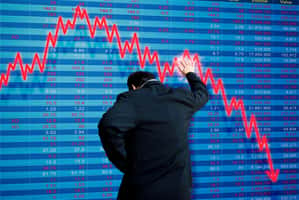Headquartered in Canada, prominent e-commerce firm Shopify Inc. (SHOP - Get Rating) confronts significant obstacles in the wake of a soft demand that might adversely affect its profitability.
Additionally, as the tech sector is characterized by fierce competition and with the constant potential for technology-based disruption, it may be advisable to approach investment in this stock with caution at present.
In the fiscal quarter ending on March 31, 2023, SHOP’s revenues climbed by a striking 25.2% year-over-year, amounting to $1.51 billion. However, its total operational costs for the company swelled by 23.6% compared to the previous year, reaching a hefty sum of $910 million, and concurrently, the quarter’s operation losses surged to $193 million, showing an unfortunately high 96.9% increase compared to the same period of the prior year.
On June 6, SHOP reported that it had completed a previously announced deal transferring the majority of shares from its former Shopify Logistics division to Flexport, a global logistics platform recognized for its tech-focused operations.
Again, it bears a notation that SHOP sits squarely within a challenging macroeconomic environment right now. Like many others, the company is feeling the pinch of inflationary pressures and recognizes that an inability to compensate for rising costs by increasing prices could lead to serious implications for its business, finances, and operational results. So, I think the stock is best avoided now.
Analysis of Shopify Inc’s Financial Health: Evaluating Net Income, P/E Ratio, P/S Ratio, ROIC, and Current Ratio
The data series presents a fluctuating trend in the trailing-12-month net income of SHOP. Here’s a summarized view with more significant emphasis on recent data:
- From September 30, 2020 ($196.41 million) to December 31, 2020 ($319.51 million), net Income was considerably increased.
- In March 2021 and June 2021, we observed a further escalation in net income values reaching $1.61 billion and $2.45 billion, respectively, demonstrating strong growth in these periods.
- Subsequently, the net income dramatically surged to its peak at $3.41 billion by September 2021.
- However, the trend reversed, with SHOP’s net income decreasing to $2.91 billion by the end of 2021.
- In 2022, the figures took a downturn, with a drop to $181.81 million in the first quarter of the year. Significantly, it went into negative territory by mid-2022 (-$1.90 billion) and worsened deeper into negative net income by the close of 2022 (-$3.46 billion).
- The data series concludes with the latest available point noting a net income of -$1.92 billion as of March 2023.
In conclusion, SHOP has experienced significant fluctuations in its net income over this period. Notably, after a powerful upward trend throughout 2020 and 2021, the company showed a sharp downturn into negative Net Income figures in 2022. As per the last value in the series, the net income stands at -$1.92 billion, suggesting financial challenges for the company recently.

The Price/Earnings Ratio (P/E) of SHOP shows considerable fluctuations over the given period from September 2020 to March 2023.
- In the last quarter of 2020, the P/E started at 606.43, decreased to 420.55, increased again to 546.47, showing a volatile trend in that year.
- Thereafter, a steep downward trend can be observed throughout 2021. Starting from 99.56 in the first quarter, it continued to decrease through the year, reaching a low of 25.53 and then 32.26 in the fourth quarter of 2021, signifying a decrease in earnings relative to the company’s stock price.
- The start of 2022 saw a significant rise to 286.60 in P/E in the first quarter. However, a drastic fall was observed mid-year, as the P/E fell into negative territory (-23.41). The reason behind these negative values could be decreased profitability or increased stock prices.
- By the end of 2022, the negative P/E amplified further to -19.67, hinting toward a potential financial risk or overvaluation.
- Proceeding into 2023, this negative trend persisted, with the P/E reaching -38.21 in the first quarter. This demonstrates the company’s inability to generate positive earnings or that its stock price is significantly overvalued.
- The final measured P/E showed a significant decrease compared to the first value, from 606.43 in the third quarter of 2020 to -38.21 in the first quarter of 2023, demonstrating an overall downward trend in the company’s earnings relative to its stock price.
In conclusion, the financial health of SHOP seems to have deteriorated during this period, as indicated by the negative P/E values in recent years, indicating potential overvaluation of its stocks or lower profitability. More recent data confirm this negative trend, emphasizing the need for a careful financial assessment.

The trend and fluctuations of the Price/Sales Ratio (P/S) for SHOP indicate a significant decrease over recent years, with a few periods of rebound.
- Starting from September 2020, the P/S was at its peak of 48.48.
- By the end of December 2020, it experienced a slight drop to 45.87; yet, another entry on the same date shows an uplift to 59.60. Thus, an inconsistency is noticed.
- However, in 2021, a consistent declining trend can be seen from the March high point of 46.47, reaching a markedly low point of 16.14 by the year-end. An additional value recorded on this date depicts a slightly higher value at 20.39.
- In 2022, the downward tendency continued waning to an all-time low of 8.27 by September. Still, by the end of the year, the P/S jumped up to 10.81, with an additional December entry showing an even better figure at 12.16.
- Looking ahead to the first quarter of 2023, the trend appears to be sustained, with a slight increase to 12.41. In terms of growth rate, considering the fluctuation from the initial value in September 2020 (48.48) to the last known value in March 2023 (12.41), there’s been an approximate decrease of 74%.
This decisive downward trajectory evidences a reduced company valuation according to the P/S, although more recent data from the end of 2022 and early 2023 implies a potential recovery phase.

SHOP’s Return on Invested Capital (ROIC) demonstrates a fluctuating trend throughout the observed period. The major points are as follows:
- Starting at a value of 0.041 in September 2020, there was an initial increase to 0.071 by December 2020.
- The year 2021 showed significant growth, with ROIC peaking at 0.437 by September before declining to 0.314 by December 2021.
- It then dropped drastically through 2022, starting at 0.012 in March, becoming negative in June, and reaching -0.45 by the end of the year.
- The first quarter of 2023 indicates a slight improvement, with ROIC rising to -0.25.
From the first measured value in September 2020 to the most recent reading in March 2023, SHOP’s ROIC has decreased by nearly 0.49, representing a fall of approximately 1200%. However, this negative growth is driven largely by the company’s poor performance in recent data, particularly the steep declines in the year 2022. Despite the recent downturn, it’s important to note that SHOP experienced considerable growth throughout 2021, suggesting potential volatility rather than a consistent downward trend. Reporting future values will demand close observation due to this fluctuation to ascertain whether the improvement seen at the beginning of 2023 marks a reversal of the prior negative trend.

The dataset presented tracks the Current Ratio of SHOP from September 2020 through March 2023. The Current Ratio is an important measure used to assess a company’s ability to cover its short-term liabilities with its short-term assets. Below are the key findings from the data:
- The starting Current Ratio recorded on September 30, 2020, was 17.87.
- The Current Ratio experienced fluctuations over the entire period with a general trend of decreasing values.
- Specifically, the greatest decrease was noted between June 2022 (11.17) and September 2022 (6.64).
- The latest recorded Current Ratio from March 2023 showed a slight dip from the previous value in December 2022 (from 7.07 to 6.71).
Considering the change from the initial Current Ratio of 17.87 in September 2020 to the final ratio of 6.71 in March 2023, the growth rate indicates a significant decrease of approximately -62%. These trends suggest that SHOP’s ability to cover its short-term liabilities with its short-term assets has been challenged over this period. This might necessitate further analysis to determine the underlying reasons.

SHOP: Significant Growth and Periods of Acceleration in 2023
The trend and growth rate of SHOP can be summarized as follows, where dates are formatted by month, day number, and year:
- Starting at $45.96 on January 27, 2023, the stock price increased to $50.71 by February 3, 2023.
- The price experienced a slight reduction reaching $47.83 on February 17, then fell significantly to $41.01 by March 3, 2023.
- There was a mild recovery in mid-March, peaking at $45.99 at the end of the month; however, it remained mostly steady throughout April, with the highest value of $48.61 towards the end of the month.
- A clear upward trend became evident in May 2023, starting at $52.09 and sharply increasing to $63.18 on May 12, 2023. This represents an accelerated growth rate.
- Despite some fluctuation in late May and early June, where the prices declined to $58.27 by June 2, the upward trend continued, as the stock value rose again to $65.05 on June 16, 2023. This indicates a continuing growth period, even with minor fluctuations.
- The end of June showed a minor deceleration in growth rate, with the price settling down to $64.31 on June 30, 2023, after which the price underwent several ups and downs in July but overall stayed on the positive track.
- The upward trend continued and accelerated, with the stock reaching its highest price on record at $68 on July 19, 2023.
In summary, SHOP showed significant growth from January to July 2023, with periods of acceleration in February, May, and June, minor decelerations primarily in late May and June, but generally a consistent upward trend. Here is a chart of SHOP’s price over the past 180 days.

Analyzing SHOP’s POWR Ratings: Focus on Growth, Sentiment, and Momentum
SHOP has an overall D rating, translating to a Sell in our POWR Ratings system. Based on the given data, SHOP’s POWR Ratings have shown improvement over time in the category of Internet – Services stocks, which comprises 29 stocks in total, and SHOP is ranked #22. Here is a summary of the changes over time:
The POWR grade for SHOP in the Internet – Services category of stocks has seen some variation over time. Here’s a breakdown:
- From January 21, 2023, to February 25, 2023, the POWR grade for SHOP stayed consistently at D, and it ranked between 27 and 26.
- Throughout March and until mid-April 2023, the POWR grade remained D, but we see an improvement in its category rank, moving to between 26 and 20.
- In the last week of April 2023, the rank in the category still continues to be 20, but the POWR grade remains at D.
- The grade improved to C during the week of May 13, 2023, where it retained this grade for two months while the rank varied between 20 and 18.
- From July onwards, despite maintaining a C POWR grade, a slight increase in the rank in the category is observed, with ranks recorded as high as 22.
As of the latest recorded data on July 20, 2023, SHOP holds a D POWR grade and ranks #22 in the Internet – Services category of stocks.

Stocks to Consider Instead of Shopify Inc. (SHOP)
Other stocks in the Internet – Services sector that may be worth considering are Liquidity Services Inc. (LQDT - Get Rating), Shutterstock Inc. (SSTK - Get Rating), and Liberty TripAdvisor Holdings Inc. (LTRPA - Get Rating) — they have better POWR Ratings.
43 Year Investment Pro Shares Top Picks
Steve Reitmeister is best known for his timely market outlooks & unique trading plans to stay on the right side of the market action. Click below to get his latest insights…
Steve Reitmeister’s Trading Plan & Top Picks >
Want More Great Investing Ideas?
SHOP shares were trading at $65.83 per share on Thursday afternoon, down $2.40 (-3.52%). Year-to-date, SHOP has gained 89.66%, versus a 19.50% rise in the benchmark S&P 500 index during the same period.
About the Author: Kritika Sarmah

Her interest in risky instruments and passion for writing made Kritika an analyst and financial journalist. She earned her bachelor's degree in commerce and is currently pursuing the CFA program. With her fundamental approach, she aims to help investors identify untapped investment opportunities. More...
More Resources for the Stocks in this Article
| Ticker | POWR Rating | Industry Rank | Rank in Industry |
| SHOP | Get Rating | Get Rating | Get Rating |
| LQDT | Get Rating | Get Rating | Get Rating |
| SSTK | Get Rating | Get Rating | Get Rating |
| LTRPA | Get Rating | Get Rating | Get Rating |






